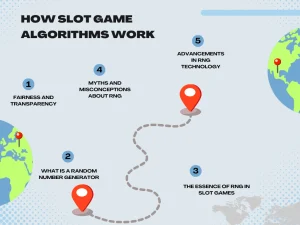You know that feeling. You click ‘spin’ and instantly, a cascade of sounds washes over you. A triumphant fanfare on a win. The subtle, anticipatory click-clack of the reels slowing down. It’s not just background noise. It’s a meticulously crafted soundscape designed to do one thing: keep you engaged.
Honestly, we often focus on the visuals—the flashy graphics, the vibrant symbols. But the audio? It’s the invisible hand guiding your emotions, a psychological trigger working in concert with the gameplay. Let’s dive into how these soundtracks are composed and the profound influence they wield.
The Psychology of Sound: Why Your Ears Are the Real Target
Game developers aren’t just hiring composers to write catchy tunes. They’re employing principles of auditory psychology. Sound is a direct line to our emotional core. It can induce excitement, calm, tension, and, most importantly, a state of flow.
Think about it. The celebratory jingle after a win, even a small one, provides a hit of dopamine. It’s positive reinforcement, pure and simple. That sound tells your brain, “You did it! Good job!” Conversely, near-miss sounds—where two high-value symbols land with a third just off the payline—often feature a tense, building sound that mimics the anticipation of a win. It’s frustrating, sure, but it’s also motivating. It makes you think, “I was so close, next time for sure.”
Key Audio Triggers in Slot Design
| Sound Type | Psychological Purpose | Common Example |
| Win Fanfares | Positive reinforcement, reward sensation | Rising brass notes, celebratory melodies |
| Reel Spins & Stops | Building anticipation, creating rhythm | Clicking, whirring, distinct “thud” on stop |
| Near-Miss Effects | Encouraging continued play despite loss | Tense strings, “almost there” chimes |
| Ambient Background Music | Setting the theme, maintaining immersion | Egyptian flutes, jungle drums, space-age synths |
Composing the Unforgettable: Inside the Sound Designer’s Studio
So, how is a slot game soundtrack actually made? It’s a fascinating blend of artistry and technical precision. The process often starts with the game’s theme. An adventure slot set in the Amazon rainforest will need a completely different audio palette than a classic fruit machine or a game based on a rock band.
Composers and sound designers work to:
- Establish a Mood: The background music sets the stage. Is it mysterious? Energetic? Relaxing? This looped track has to be engaging but not overwhelming—it can’t fatigue the player’s ears over a long session.
- Create a Sonic Identity: Every action needs a unique sound. The spin, the stop, the bonus trigger, each type of win. These sounds must be distinct and instantly recognizable amidst the audio chaos.
- Build a Dynamic Soundscape: Modern slots use adaptive audio. The music might intensify when you enter a bonus round. The sound effects might become richer during free spins. This dynamic range prevents monotony.
And here’s a little secret: many of the most satisfying sounds, like the clinking of coins or the crisp snap of a card, are Foley sounds. That’s right, sound artists record real-world objects to create that sense of tactile authenticity. It’s a weirdly human touch in a digital world.
More Than Just Bells and Whistles: The Functional Role of Audio
Beyond the psychology, audio serves some incredibly practical purposes. It’s a feedback system. You don’t always need to stare at the screen to know what’s happening. The sounds tell you everything.
Imagine you’re multi-tasking. The specific sound of a scatter symbol landing tells you that you’ve triggered a feature, even if you glanced away. That’s by design. This auditory feedback is crucial for creating a seamless and intuitive user experience in online slots. It guides the player, confirms their actions, and celebrates their successes without them having to read a single line of text.
The Evolution of Slot Audio: From Mechanical to Orchestral
It’s come a long way. The first slot machines had, well, no audio beyond the physical clunk of mechanisms. Then came the simple, synthesized beeps and bells of early video slots. Today? We have fully orchestrated scores, licensed pop music, and sound effects that rival big-budget video games.
This evolution reflects the increasing competition for player attention. A generic soundtrack just doesn’t cut it anymore. Players expect a high-quality, immersive audio experience that matches the visual spectacle. The composition of slot game music is now a specialized field, with composers understanding the unique rhythms and requirements of the genre.
A Thoughtful Spin: The Power of Player Control
Here’s an interesting trend, a bit of a pain point for some players: the inability to control the audio. Most reputable online casinos and game developers now include sound settings. This is vital. Why?
Because not everyone wants the full sonic assault. Some players prefer to listen to their own music while playing with only the essential game sounds on. Others might need to play in silence. Giving players the option to adjust or mute the soundtrack and effects is a mark of a respectful and user-friendly platform. It acknowledges that while sound is a powerful tool, the player’s comfort should always come first.
Next time you play, try this: turn the sound off completely. The experience feels stark, empty, almost… broken. That silence speaks volumes about how integral audio has become.
The Final Reel: An Unheard Melody
So, the next time you hear the celebratory jingle of a slot game win, take a second to appreciate the craft behind it. That sound wasn’t an accident. It was composed, tested, and implemented with a deep understanding of how you think and feel. It’s a melody designed not just to be heard, but to be felt—a subtle, powerful force shaping every moment of play, one spin at a time.
In the end, the most successful slot soundtracks are the ones you don’t consciously notice. They simply make the game feel right. They are the unseen architects, building an experience that is, quite literally, music to our ears.




